Locking Mechanisms
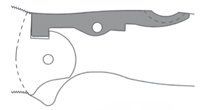 BACK LOCK
BACK LOCK
A locking system positioned on the back of the handle that uses a rocker arm that pivots in the center. A lug on one end of the arm engages a notch in the blade’s tang to lock the blade open.
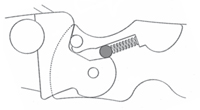 BALL BEARING LOCK
BALL BEARING LOCK
A patented compressive lock that wedges a ball bearing between a fixed anvil and the blade tang. The mechanism also serves as a detent to hold the blade in the closed position.
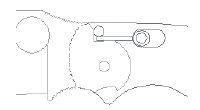 BOLT ACTION LOCK
BOLT ACTION LOCK
A locking mechanism designed by Blackie Collins that consists of a spring-loaded bolt that engages on a ramp on the tang of the blade to lock the blade open.
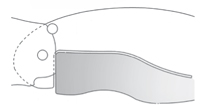 CHRIS REEVE INTEGRAL LOCK (R.I.L.)
CHRIS REEVE INTEGRAL LOCK (R.I.L.)
Developed by custom knifemaker Chris Reeve, the R.I.L. is similar to the Walker LinerLock, but uses a lock bar that is integral to one of the handle scales.
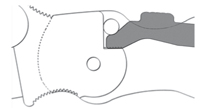 COMPRESSION LOCK®
COMPRESSION LOCK®
A lock mechanism that uses a leaf-like spring from a split liner in the handle to wedge laterally between a ramp on the blade tang and the stop pin (or anvil pin). Developed by Spyderco, it provides extreme lock strength and ease of use.
FRICTION FOLDER
A type of nonlocking folding knife in which the blade features a tab or lever extending from the tang. In the open position, this tab rests against the back of the handle and is held in place by the hand to stabilize the blade during use.
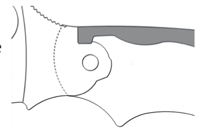 NOTCH JOINT
NOTCH JOINT
A non-locking joint in which the blade is held open by spring pressure against a notch in the tang.
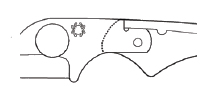 SLIP JOINT
SLIP JOINT
A non-locking mechanism in which the blade is held open by spring pressure on a flat section on the back of the blade’s tang.
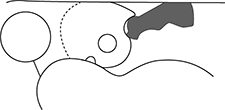 STOP LOCK
STOP LOCK
A locking system positioned on the back of the handle using two interacting rocker arms. One of which engages a notch in the blade’s tang to lock the blade open.
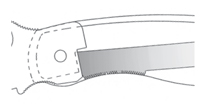 WALKER LINERLOCK
WALKER LINERLOCK
A locking system developed by custom knifemaker Michael Walker that uses a leaf-like spring split from the liner to wedge laterally against a ramped surface on the tang of the blade. ymbol-defs.svg#social-pinterest">

